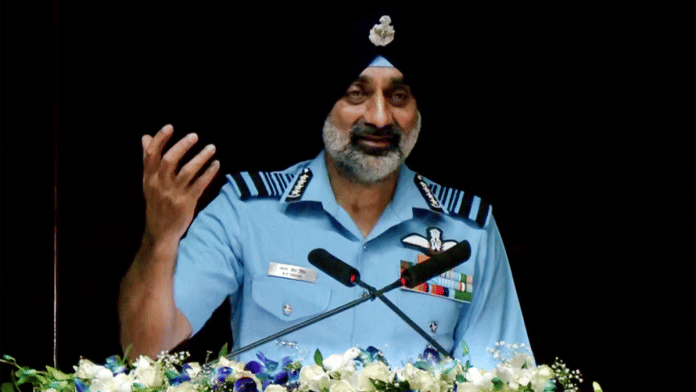New Delhi: Indian Air Force Chief Air Chief Marshal Amar Preet Singh on Friday said that 4 to 5 Pakistani fighter jets, most likely F-16s, were destroyed on the ground during air strikes carried out as part of Operation Sindoor.
Singh said the IAF targeted several Pakistani airbases, damaging radars, command centres, runways, hangars, and a surface-to-air missile system. He added that a C-130-class aircraft and possibly a high-value surveillance aircraft were also hit during the operation.
Addressing the press conference in the national capital, Air Chief Marshal Amar Preet Singh said, “…As far as Pakistan’s losses are concerned…we have struck a large number of their airfields and we struck a large number of installations…Because of these strikes, radars at least four places, command and control centres at two places, runways of course damaged at two places, then three of their hangars in three different stations have been damaged…we have signs of one C-130 class of aircraft…and at least 4 to 5 fighter aircraft,
most likely F-16, because that place happened to be F-16 with whatever was under maintenance at that time.”
“Along with that, one SAM system has been destroyed…We have clear evidence of one long-range strike, which I talked about more than 300 km, which happened to be either an AEW&C or a significant aircraft, along with that five high-tech fighters between F-16 and JF 17 class this is what our system tells us,” Singh said.
He said that during Operation Sindoor, the IAF’s advanced long-range surface-to-air missiles (SAMs) prevented Pakistan from operating even within its own territory up to a certain range.
Singh also said the operation marked a historic achievement with the longest successful missile strike of over 300 kilometres, which significantly limited Pakistan’s actions.
“Our long-range SAMs that we had procured recently and operationalised…We could look deep inside their territory. We could make sure that they were not able to operate even within their territory up to a certain distance. It will go down in history that longest kill that we achieved of more than 300 kilometres by that. And it seriously curtailed their activities,” Singh said.
The IAF chief said India entered the recent conflict with a clear goal and ended it quickly after achieving its objectives. He also said this should serve as a lesson for the world, as many other ongoing wars have no end in sight.
“A clear directive, clear mandate was given to the Indian Armed Forces… It stands as a lesson which will go down in history that this is one war that was started with a very clear objective and it was terminated in a quick time without just prolonging it,” he said.
“We are seeing what is happening in the world, the two wars that are going on, there’s no talk about termination. But we could make them reach a stage where they ask for a ceasefire, ask for termination of hostilities. And also, we took a call as a nation to terminate those hostilities because our own objectives are met. I think this is something that the world needs to learn from us,” Singh said. (ANI)





